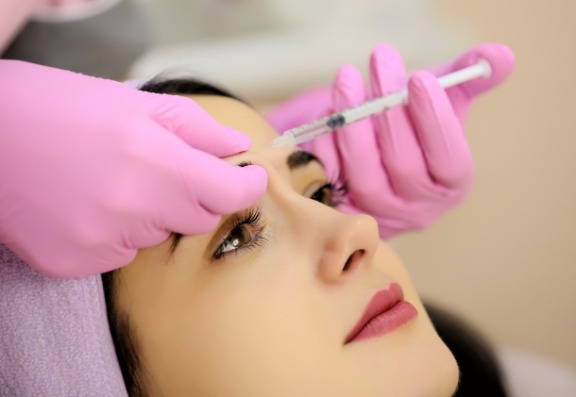Prior to receiving any sort of treatment, you need to have a detailed understanding of what will be used and how it’s going to impact your body. When it comes to botulinum toxin injections, I know more than most that they don’t have the best reputation, but that’s simply the result of inexperienced practitioners or those who value profits more than patient safety.
A Brief History Of Botulinum Toxin Injections
In 1987, a Canadian ophthalmologist from Vancouver, called Jean Carruthers, started using botulinum toxin to help her patients control their eye spasms. Coincidentally, these patients then realised that their frown lines had reduced, too! It was then that Jean suspected that she had stumbled upon a new treatment method. To further test this theory, she injected herself with the same botulinum toxin solution, which confirmed her suspicions.

How Botulinum Toxin Works
How Botulinum Toxin Works
Botulinum toxin injections are administered into muscles, which, as you may already know, work in pairs. When one becomes shorter, the other becomes longer, allowing you to perform movements.

It Takes an Experienced and Talented Injector
When introduced to muscles, the toxin will bind to nerve endings, release acetylcholine (a neurotransmitter) and prevent them from sending signals to these specific muscles, which will stop them from contracting for several months at a time.
This lack of contraction is what enables facial muscles to soften. It takes an experienced and talented injector to ensure only the desired muscle is treated and that others are not affected. Many often worry about botulinum toxin staying in the body but the truth of the matter is that this substance only actually remains in for a few hours, but it can take a few weeks for patients to see the full results of their treatment.
If You Find Yourself Dealing With Excessive Sweating, I Suggest Making the Following Changes:
What Else Can Botulinum Toxin Be Used For?
When it comes to treating conditions such as excessive sweating, it’s a little bit different as sweat comes from our skin and not our muscles. However, the basic concept remains the same. The nervous system is what causes your sweat glands to start working as soon as your body temperature rises in an attempt to cool you down, but after having botulinum toxin injections in your armpits, these signals become blocked. Sadly, for those with hyperhidrosis, they may sweat excessively at any time, even when they’re not particularly warm. However, it is important to consider other options before seeking treatment.
• Try to avoid stressful situations
• Try some mindfulness exercises to reduce anxiety

Author: Clare McLoughlin
Clare McLoughlin has been a general nurse since 1988 and is an Independent Nurse Prescriber and advanced procedure aesthetic nurse and trainer with more than 16 years’ experience in the aesthetic field.Clare is a member of the Save Face UK Expert Advisory Board.
As a recognised aesthetic trainer, Clare is known for her professional approach and skill in the field of aesthetics and has appeared on a number of television programmes performing injectable aesthetic treatments. After working as a practitioner for a large national chain 2001-2003, Clare started her own business – Appearance Based Medicine – in 2004, to enable her to provide the highest level of patient care and satisfaction.
Clare is has been an advanced techniques trainer in Botulinum toxin treatments and Skin fillers since 2004. As well as training other Healthcare professionals in this field, Clare is a member of the British Association of Cosmetic Nurses (BACN) and British Association of Sclerotherapists (BAS).
Clare is recently published and her clinic Appearance Based Medicine is located in Marlow- on- Thames.
To view more blogs by Clare McLoughlin please click here.
